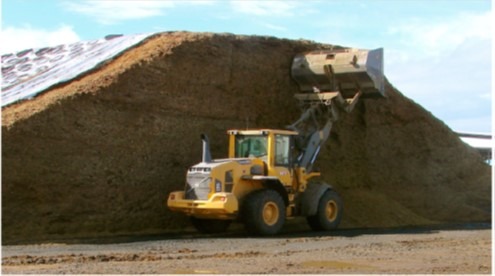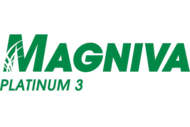The fast pace of harvest can push thoughts of safety aside. However, this is one of the most important times to focus on safety precautions — and on constructing a stable silage mass that can be safely fed out throughout the coming year.
Every Day
- Never repair any machinery while it is running. Always switch off equipment from the source of power and make sure the machinery has stopped.
- Keep machine guards and shields in place at all times.
- Wear safety vests while working around silage and moving equipment.
- Always work around silage with a buddy. You should both be able to see each other at all times.
Pre-Harvest
- Equip older tractor models with a roll-over protective structure (ROPS). When used with a seat belt, a ROPS helps keep the operator in the tractor’s protective zone in the event of a roll-over.
- If you ensile in a bunker, sight rails should be installed on above-ground walls. These rails indicate the location of the wall to the tractor operator: they are not intended to hold an over-turning tractor.
- Lights should be installed to the sight rails of the bunker if filling at night.
- Use low-clearance, wide front-end tractors equipped with well-lugged tires to prevent slipping.
- Add weights to the front and back of the tractors to lower the center of gravity and improve stability. This will have the added benefit of improving packing efficiency.
Bunker and Pile Filling
- Do not carry the bucket any higher than necessary to help keep the tractor’s center of gravity low when using front-end loaders to move forage to the bunker or pile.
- Raise the truck’s dump body only when the vehicle is on a firm surface. Trucks can become less stable as the bed is raised.
- Never use large rectangular or round hay or straw bales for temporary bunker walls.
- Do not fill higher than unloading equipment can safely reach. Do not fill higher than the top of the bunker wall.
- Access to the near vicinity of the bunker/pile itself should be limited to essential personal only
- Properly adjust the distributor/spreader so the forage will be evenly distributed in the silo and will not require anyone entering the silo during or after filling.
Figure 1. Do Not Fill Higher Than Unloading Equipment Can Safely Reach.

Tower Silo Filling
- Inspect your silo regularly to detect and repair deterioration of concrete or reinforcing steel. High-moisture forages can increase the risk of corrosion.
- Ensure power sources have been disconnected when performing maintenance.
- Use caution when climbing. Beware of slippery condition on steps caused by rain, ice, mud, manure, grease, feed or other material.
- Avoid off-center loading and uneven distribution, particularly of free-flowing materials.
- Stored materials with a moisture content of 30 to 40% increase the risk of spontaneous combustion.
- Along with other factors, improper moisture content is a significant cause of silo structure failure.
- Ventilate newly filled and partially filled silos before entry. Continue ventilation upon entry. For more information, click here.
Packing
- Establish driving procedures to prevent collisions when two or more packing tractors are used.
- Load and pack forage uniformly to help prevent roll-overs during filling. A tire rut or depression from a previous load, low tires on one side of a truck, uneven loading of a truck or a wind gust increase roll-over risks during packing.
- Packing tractor operators should always form a progressive wedge of forage, which provides a safe slope for packing when filling bunker silos and drive-over piles.
- Maintain slopes below a maximum of 25% (4-to-1 run to rise) on the sides and ends of a drive-over pile.
Additional reading
Check out these resources written by experts for more information on silage safety.
- Basics of Silage Safety Video. This 8-minute video is intended to make producers aware of the ever-present dangers when working around silage storage structures, and re-enforce good practices to reduce risks on their operations.
- Silage Safety Handbook is a free download available in both English and Spanish. The handbook offers practical tips for building, maintaining and feeding out silage bunkers and piles, plus information about the potential dangers of gases formed naturally during the ensiling process.
Interested in learning more about silage safety? Contact us and a Lallemand Animal Nutrition representative will respond to you with a special offering.








